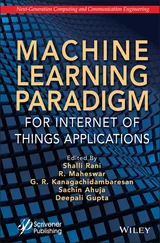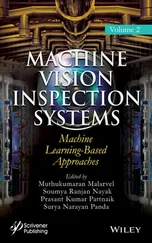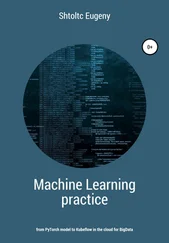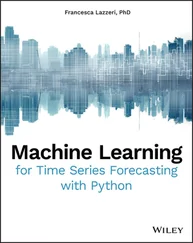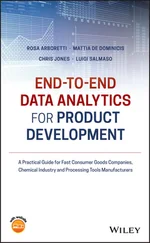Keywords:Cyber security, machine learning, malware detection, classification
This chapter is structured with an overview that “It’s only when they go wrong that machines remind you how powerful they are” by Clive James.
The major concern of these days is digital security, which is at its heights; this is because the era is becoming digitech uninterrupted exponentially. At the same time, our customizable environment becoming dynamic and scalable with its inevitable warehouse differentiated as cloud computing is one of the major concerns. Cyber security can be applied upon to attain the grip over this digital surface, whereby the veritable exposure of various machines on the web provides an area for hackers in committing frauds, which we name it as cybercrime with an internet intervention being globally at 3.9 million users across the world as per the recent news of 2020 in BBC, has aired up the opportunity for cybercrime exponentially. It is a multi-disciplinary prevention where it spans IoT through it by constantly evolving some active processes like minimizing or preventing its impact by cyber security. There exist a large number of serious issues related to the frightening situations in the growth of IoT, specifically in ground of security, privacy, and, furthermore, in all the aspects in technical environment to relocate the concerned areas which have started to move on with a rapid pace. As of need of the hour, our study also focuses on forming it as a basic entity of every design attribute for each of the related database of the electronic data transfer, so that the world could rely upon the technology as a potential of enriched dimension to take over the world with the striding facts of accessing IoT with relevance to secured encryption routes over the cloud and its associated tech facts. This secure revolution may be tough in its approach but will definitely be a renaissance.
It is a matter of great concern that, as we are progressively moving ahead with highly advanced computing technologies being deduced over internet, at the same time, the perception that is being provoked upon the security risks hovering over World Wide Web is a matter to be explored. Several encryption technologies are fuelling the online gambling and fraudulence, which is hampering the transformation of secret messages over internet.
Hence, to fine-tune the exploitation and get a makeover, the concept of cyber security needs to be embedded into the interoperability of the impaction presumption in such a way that security is restored at proactive way. Cyber security demonstrates the coaxial control over the offending activity congruency supporting the formal anticipation of stronger IT skills, suggesting the vulnerable access to the World Wide Web in increasingly analyzing the threats, and significantly making an attempt to secure usage and integration of digital information. With this being the most debated, recently, machine learning is able to resolve the conflict and can enormously bypass the network structure and work over the latest digital infrastructure.
2.2 Some Associated Impactful Terms
2.2.1 IoT
It can be enumerated in a sense of a sensible system of interrelated computing mediums along w ith association of electronic, mechanical, and digital machines that were built up with unique identifiers and its capability to get on over the network for transferring data without the intervention among the human beings as well as in between the users and computer.
It also can be noted as a perfect definition of a large range of globally connected devices of many forms starting from a sensor to that of smart phones and even beyond these.
The IoT has come up as the next revolutionary ideology [1], which enables billions of devices all over the world over a distributed network to be networked completely for transformation of data and its exchange, which would enhance the quality of our day-to-day lives. At the same time, cloud computing paves demand for convenient and stupendous network accessibility to enable sharing computing of resources possible in all aspects which would, in turn, make data integration dynamically from all the relative data sources in an adherent way. There exist various issues while implementing cloud and IoT, and the defragmentation of cloud computing with IoT is the one of the most purposeful ways, in which it needs to come over such issues. The wide range of resources available over the cloud can be effectively beneficial toward the cause of IoT, while the cloud can be profitable in gaining publicity to enhance its efficiency by coming over its shortcomings with the real-world objects in a versatile and distributed way. This study of ours provides an overview of integrating cloud and IoT over basing each other for a generous dealing with cybercrimes, thereby implementing the machine learning methodological algorithms over it in a procuring way.
IoT presents ubiquitous connectivity for a wide range of devices, services, and applications. These include intelligent computers, smart phones, office equipment, wireless-enabled cars, lighting systems, heating, ventilation, and air condition (HVAC), household appliances, and many others. To be IoT-enabled, a device (“thing”) ought to be on a network and connected to a communicating node. Various communication network technologies and their architectural infrastructures in a fully connected network such as 3G, LTE, Wi-Fi, Bluetooth, ZigBee, Z-wave, and Sigfox provide reinforced connectivity services for IoT deployment on many services platforms [2].
Over the past decade, internet technologies have revolutionized the interconnection among people at an unprecedented scale and pace. The next revolution is expected to craft the interconnection among diverse objects leading to what experts termed as the smart environment.
As we move from World Wide Web (static pages web) to web2 (social networking web) to web3 (ubiquitous computing or web of things), the need for data-on-demand using sophisticated intuitive queries continues to increase significantly. This era could be consequently termed as the post-PC era where smart phones and related devices are changing our environment and the way “thing” (including humans) interacts. Things in the new environment are becoming more interactive as well as informative in an operative manner.
An IoT device comprises of sensors, actuators, working frameworks, operating systems, framework programming, preloaded applications, and lightweight administrations conglomerating internet technology with featuristic devices.
Examples are PC, laptops, tablets, and smart phones.
IoT devices are usually of the sensible architectural gadgets integrated with software connected with each other over the web for communication, so that they help programmers for simple defragmentation of the scientific world [3].
In today’s era, the devices are in utility of internet and its related devices are rising rapidly. It basically includes all the gadgets which are well equipped digitally.
It usually depends upon the capability of getting in connection with the web in all aspects.
The device is integrated with all the latest technical entities like sensors and actuators to all the functional software devices.
When both of such functionalities are merged on, an IoT device is created. The strategy of market is increasing rapidly, and they are gaining popularity at a higher strand where the users are also increasing rapidly.
Advantages
It facilitates the interaction among gadgets called as machine-to-machine interaction.
It embarks upon proper automation and control.
Defragmentation which would be generous for operating.
Читать дальше



